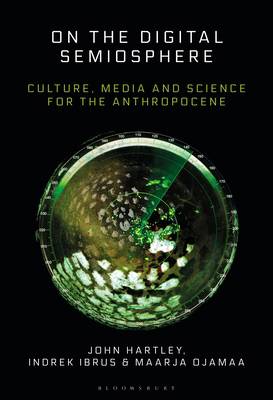
Je cadeautjes zeker op tijd in huis hebben voor de feestdagen? Kom langs in onze winkels en vind het perfecte geschenk!
- Afhalen na 1 uur in een winkel met voorraad
- Gratis thuislevering in België vanaf € 30
- Ruim aanbod met 7 miljoen producten
Je cadeautjes zeker op tijd in huis hebben voor de feestdagen? Kom langs in onze winkels en vind het perfecte geschenk!
- Afhalen na 1 uur in een winkel met voorraad
- Gratis thuislevering in België vanaf € 30
- Ruim aanbod met 7 miljoen producten
Zoeken
On the Digital Semiosphere
Culture, Media and Science for the Anthropocene
John Hartley, Indrek Ibrus, Maarja Ojamaa
Paperback | Engels
€ 69,45
+ 138 punten
Omschrijving
It is only since global media and digital communications became accessible to ordinary populations - with Telstar, jumbo jets, the pc and mobile devices - that humans have been able to experience their own world as planetary in extent. What does it mean to be one species on one planet, rather than a patchwork of scattered, combative and mutually untranslatable cultures? One of the most original and prescient thinkers to tackle cultural globalisation was Juri Lotman (1922-93). On the Digital Semiosphere shows how his general model of the semiosphere provides a unique and compelling key to the dynamics and functions of today's globalised digital media systems and, in turn, their interactions and impact on planetary systems.
Developing their own reworked and updated model of Lotman's evolutionary and dynamic approach to the semiosphere or cultural universe, the authors offer a unique account of the world-scale mechanisms that shape media, meanings, creativity and change - both productive and destructive. In so doing, they re-examine the relations among the contributing sciences and disciplines that have emerged to explain these phenomena, seeking to close the gap between biosciences and humanities in an integrated 'cultural science' approach.
Developing their own reworked and updated model of Lotman's evolutionary and dynamic approach to the semiosphere or cultural universe, the authors offer a unique account of the world-scale mechanisms that shape media, meanings, creativity and change - both productive and destructive. In so doing, they re-examine the relations among the contributing sciences and disciplines that have emerged to explain these phenomena, seeking to close the gap between biosciences and humanities in an integrated 'cultural science' approach.
Specificaties
Betrokkenen
- Auteur(s):
- Uitgeverij:
Inhoud
- Aantal bladzijden:
- 360
- Taal:
- Engels
Eigenschappen
- Productcode (EAN):
- 9781501369216
- Verschijningsdatum:
- 28/07/2022
- Uitvoering:
- Paperback
- Formaat:
- Trade paperback (VS)
- Afmetingen:
- 152 mm x 229 mm
- Gewicht:
- 485 g

Alleen bij Standaard Boekhandel
+ 138 punten op je klantenkaart van Standaard Boekhandel
Beoordelingen
We publiceren alleen reviews die voldoen aan de voorwaarden voor reviews. Bekijk onze voorwaarden voor reviews.









